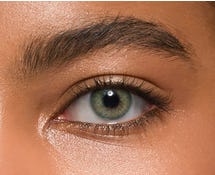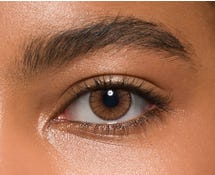Color Contact Lens Prescription: A Comprehensive Guide
Color contact lenses are specialized medical devices that can change the color of your eyes. They are designed to sit directly on the cornea of the eye, just like traditional contact lenses, but have the added benefit of altering the appearance of the iris. These lenses come in a variety of colors and patterns, ranging from subtle, natural-looking shades to bold and vibrant hues. They are a popular choice for people who want to change their eye color for fashion, cosmetic, or entertainment purposes.
The primary purpose of color contact lenses is twofold: vision correction and aesthetic enhancement. For vision correction, color contact lenses can correct a variety of refractive errors, including myopia, hyperopia, and astigmatism. They work by bending light as it enters the eye to focus it correctly on the retina, providing clear vision. In addition to vision correction, color contact lenses offer the added benefit of changing the color of your eyes. They can enhance your natural eye color or completely transform it, providing a fun and exciting way to experiment with your appearance.
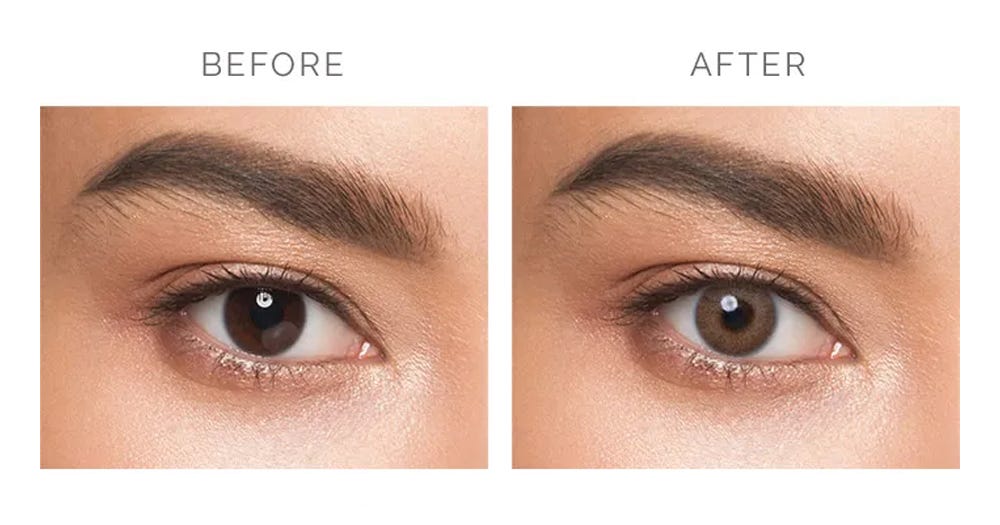
It's important to note that even if you do not require vision correction, a prescription is still necessary to purchase color contact lenses. This is because they are considered medical device and can potentially harm your eyes if not fitted properly. A professional fitting and prescription ensure that the lenses fit correctly on the cornea, do not cause any discomfort or irritation, and do not increase the risk of eye infections. When purchasing color contact lenses, it's important to only buy them from a reputable source, such as an eye doctor or licensed online retailer, and to never share them with others.
In addition to offering vision correction and aesthetic enhancement, color contact lenses can also provide additional benefits. For instance, certain types of color contact lenses, such as those with a tinted or polarized filter, can improve visual performance in certain activities, such as sports or driving. They can reduce glare, enhance contrast sensitivity, and improve depth perception, making it easier to see in certain lighting conditions. Overall, colored contact lenses offer a fun and exciting way to experiment with your appearance while still prioritizing the health and safety of your eyes.
Color Contact Lens Prescription: Things You Need To Know
Understanding the Anatomy of the Eye
The human eye is a complex and fascinating organ responsible for vision. It is composed of various parts that work together to process visual information. One of the most important parts of the eye is the cornea, which is a clear, dome-shaped structure located at the front of the eye. The cornea is responsible for refracting light as it enters the eye, helping to focus it onto the retina at the back of the eye. It is also responsible for protecting the eye from dust, debris, and other foreign objects.
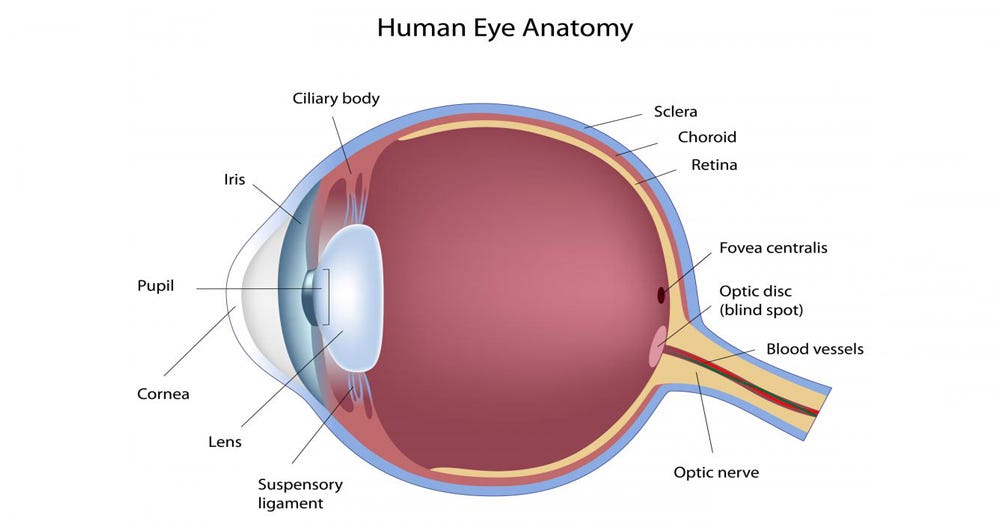
The pupil is another important part of the eye. It is the small, circular opening located in the center of the iris. The pupil regulates the amount of light that enters the eye, dilating or constricting it in response to changes in lighting conditions. The iris, the colored part of the eye that surrounds the pupil, is responsible for controlling the size of the pupil. It also gives the eye its distinctive color.
Color contact lenses interact with the cornea, pupil, and iris to change the appearance of the eye. The lenses are designed to sit directly on the cornea, and the color of the lens is visible through the clear cornea. Depending on the type of lens, the color may either cover the entire iris or just enhance the natural color of the eye. The size of the pupil is also taken into account when designing the lenses to ensure that the colored part of the lens is centered over the iris. This creates a natural-looking appearance and helps to ensure that the lenses do not interfere with vision.
Basics of Color Contact Lens Prescription
A contact lens prescription is a medical order that specifies the type and specifications of contact lenses that are appropriate for an individual's vision correction needs. This prescription is written by an eye care professional, such as an optometrist or ophthalmologist, after conducting a comprehensive eye exam. The prescription ensures that the contact lenses fit correctly on the eye, provide optimal vision correction, and do not cause any discomfort or harm to the eye.

There is a key difference between an eyeglass prescription and a contact lens prescription. Eyeglass prescriptions are designed to be used with lenses that are positioned about 12 millimeters away from the eye, while contact lenses sit directly on the cornea. As a result, the parameters in a contact lens prescription are more complex and specific, as the lenses need to be fitted precisely to the individual's eyes. Additionally, the measurements for the contact lens prescription are taken differently than those for eyeglasses.
Here are the common terms in a contact lens prescription:
Power: measured in diopters, determines the strength of the lens needed to correct the individual's vision
Base curve: refers to the curvature of the contact lens, which is chosen to match the curve of the individual's cornea
Diameter: the width of the contact lens, chosen to fit the size of the individual's cornea
Cylinder and Axis: terms that apply to individuals with astigmatism; cylinder refers to the amount of astigmatism correction needed, and axis refers to the orientation of the astigmatism correction
Add Power: an additional power correction that is added to the contact lens prescription for individuals with presbyopia, a condition in which the eye's ability to focus on close objects diminishes with age
Understanding these common terms is important for ensuring that contact lenses fit properly and provide optimal vision correction. When obtaining a contact lens prescription, it's essential to have a comprehensive eye exam and receive a prescription from an eye care professional to ensure that the lenses are safe and effective.
Process of Getting a Contact Lens Prescription
Obtaining a contact lens prescription involves a comprehensive eye examination conducted by an eye care professional, such as an optometrist or ophthalmologist. The exam includes a range of tests that evaluate the overall health of the eyes, including visual acuity, eye pressure, and eye coordination. The eye care professional will also evaluate the cornea's shape and size and assess the individual's tear production and overall eye health.
Once the eye exam is complete and the eye care professional has determined that contact lenses are a suitable option, the contact lens fitting process begins. This process involves selecting the right type of lens based on the individual's vision correction needs and eye anatomy. The eye care professional will also consider the individual's lifestyle and preferences when selecting the lenses.
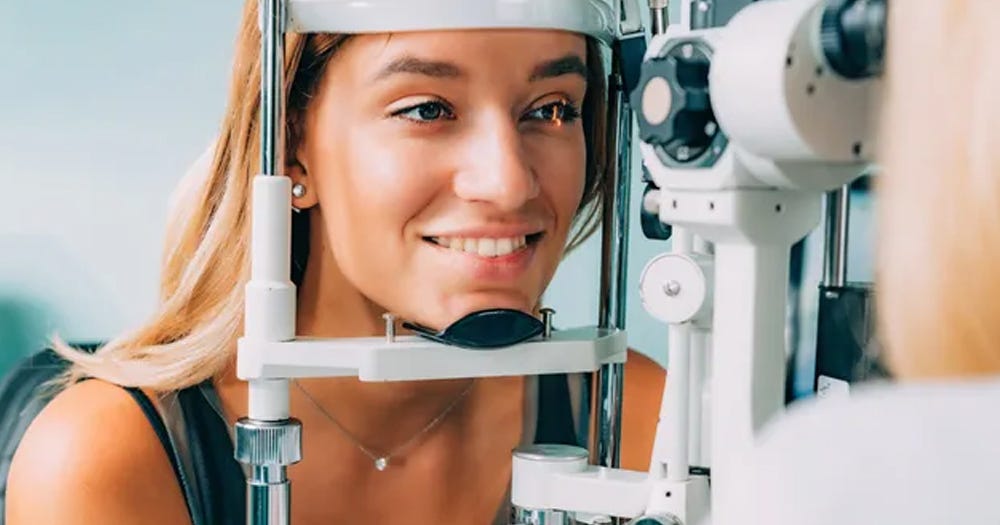
The fitting process includes a series of measurements to determine the best fit for the contact lenses, including the base curve, diameter, and power of the lenses. The eye care professional will demonstrate how to properly insert and remove the lenses, as well as how to care for them. This is a crucial part of the process, as improper handling or cleaning of contact lenses can lead to serious eye infections.
After the initial fitting, the individual will typically have a follow-up visit to ensure that the lenses are fitting properly and that the eyes are healthy. During this visit, the eye care professional will evaluate the individual's vision with the lenses in place and make any necessary adjustments to the fit or prescription. These follow-up visits are important to ensure that the lenses continue to fit properly, provide optimal vision correction, and do not cause any discomfort or harm to the eyes. It's essential to follow the recommended schedule for these visits to maintain good eye health and ensure that the contact lenses remain safe and effective.
Color Contact Lens Options
When it comes to color contact lenses, there are a variety of options available to suit different preferences and needs. One option is the visibility tint lens, which has a faint tint that makes the lens more visible during handling and insertion, but does not change the eye color. Enhancement tint lenses, on the other hand, enhance the natural color of the eye, making it appear brighter and more defined. These lenses are ideal for people who want a subtle change in eye color.
Opaque tint lenses are another type of color contact lens that completely change the eye color, even for people with dark eyes. These lenses are available in a variety of colors, including blue, green, brown, and even gray. They are an excellent option for people who want a more dramatic change in eye color or for special occasions, such as cosplay or theatrical performances.
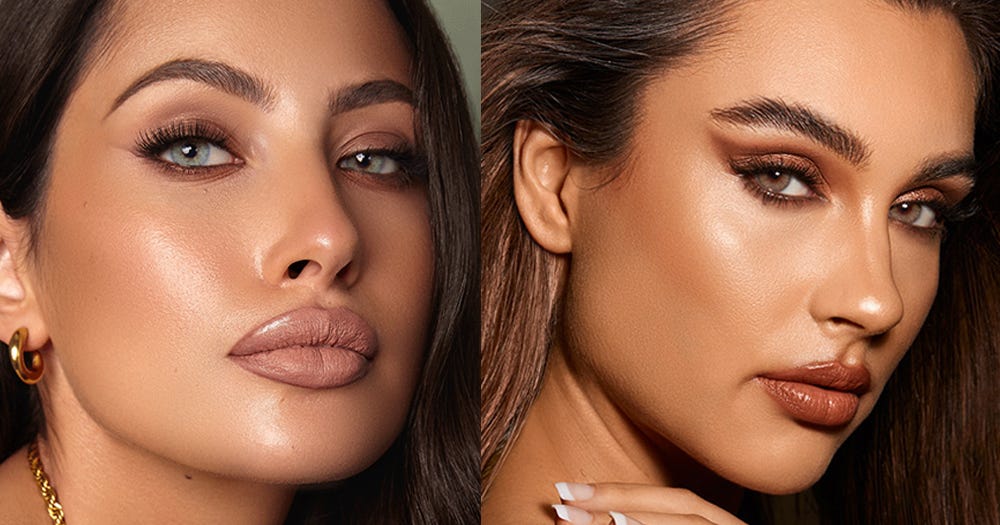
One popular brand of color contact lenses is Solotica, which is known for offering a range of natural-looking colors and replacement schedules, including daily, monthly, quarterly, and yearly lenses. Solotica lenses are also FDA-approved, ensuring that they meet strict safety standards. They are designed to fit comfortably and provide optimal vision correction, while also offering a realistic and vibrant eye color change.
When choosing a color for contact lenses, it's essential to consider skin tone, hair color, and personal style. People with warm undertones in their skin, for example, may prefer colors like honey, hazel, or brown, while those with cool undertones may prefer blue or green lenses. It's also important to consider hair color and personal style when selecting the lens color to ensure a cohesive and flattering look.
When choosing a brand, it's important to prioritize safety and quality, such as with Solotica, and to take the time to select a color that complements your unique features and personal style.
Specialty Color Contact Lenses or Custom-Made
Specialty contact lenses are designed to address specific eye conditions, such as astigmatism. Astigmatism is a common condition where the eye's cornea or lens has an irregular shape, causing blurred or distorted vision. In the past, people with astigmatism had limited options for contact lenses, but now there are specialty lenses available that can correct the condition while also providing a color change. Only a few brands offer this product, and Solotica is one of them. Solotica offers custom-made contact lenses for astigmatism that are designed to fit precisely and provide optimal vision correction while also offering a range of natural-looking colors.
One of the benefits of choosing Solotica for custom-made color contact lenses for astigmatism is the brand's commitment to safety and quality. Solotica lenses are designed to be health compliant, which means they meet strict safety and health standards. This ensures that users can trust that the lenses are safe and effective, providing optimal vision correction while also offering a vibrant and natural-looking eye color change.
Solotica's custom-made contact lenses for astigmatism are designed to fit precisely and provide optimal vision correction. They are available in the yearly lenses which are placed as a special order. This means that contact lens wearers with astigmatism prescriptions are able to enjoy wearing colored contacts without compromising their visual acuity, comfort and safety. Overall, Solotica's commitment to safety and quality, combined with its custom-made options for astigmatism, make them a reliable and trusted choice for anyone looking for specialty or custom color contact lenses.
Safety and Care for Color Contact Lenses
Proper lens care is essential for maintaining healthy eyes and preventing eye infections and other complications. This is especially important for color contact lenses, as they sit directly on the eye and can potentially increase the risk of eye infections if not properly cleaned and stored. It's important to follow the manufacturer's instructions for cleaning and storing color contact lenses to ensure that they remain safe and effective.
To clean color contact lenses, it's important to wash your hands thoroughly with soap and water before handling the lenses. Then, gently rub the lenses with a solution recommended by your eye care professional or the lens manufacturer. Avoid using water or saliva to clean the lenses, as these can introduce harmful bacteria. After cleaning, store the lenses in a clean case filled with fresh solution.
It's also important to replace color contact lenses according to the recommended schedule, even if they appear to be in good condition. Daily disposable lenses should be discarded after each use, while monthly or quarterly lenses should be replaced as directed by the manufacturer or eye care professional. Replacing lenses on schedule ensures that they remain safe and effective and helps to prevent complications such as eye infections or corneal damage.
Overall, proper lens care is essential for maintaining healthy eyes and ensuring that color contact lenses remain safe and effective. It's important to follow the manufacturer's instructions for cleaning and storing the lenses and to replace them on schedule. If you experience any discomfort or notice any changes in vision while wearing color contact lenses, contact your eye care professional right away.
Color Contact Lenses as Medical Devices
The FDA views contact lenses as medical devices and regulates them accordingly to ensure that they are safe and effective for use. This means that contact lenses, including color contact lenses, must be approved by the FDA before they can be sold in the United States. The FDA also requires that contact lenses be prescribed by a licensed eye care professional, such as an optometrist or ophthalmologist, to ensure that they are fitted properly and provide optimal vision correction.
Having an up-to-date prescription is crucial when purchasing color contact lenses. This ensures that the lenses are the correct fit and strength for the individual's eyes and vision needs. Solotica is a brand that takes FDA regulations seriously and is registered with the US-FDA as a contact lens manufacturer, providing an added level of safety and trust. Solotica also holds several international certifications, including CE, ANVISA, and ISO 9001, further demonstrating their commitment to safety and quality.
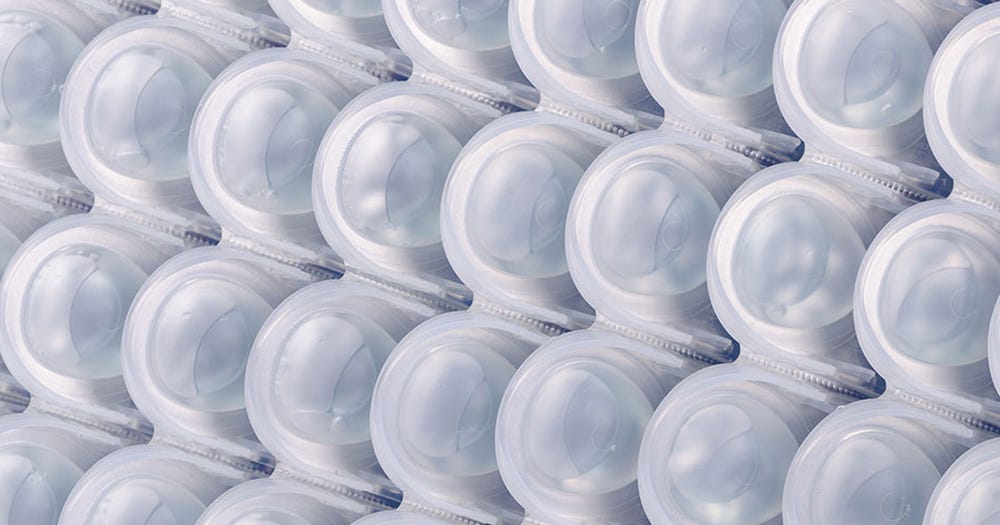
Buying color contact lenses without a prescription from an online seller can be dangerous and increase the risk of eye infections, corneal damage, and other complications. Some online sellers may be selling counterfeit products or lenses that are cheap and unregistered, which can cause serious harm to the eyes. It's important to purchase contact lenses only from reputable sources, such as licensed eye care professionals or authorized retailers. By doing so, individuals can ensure that they are getting safe and effective color contact lenses that are properly prescribed and fitted to their unique vision needs.
Common Myths and Misconceptions About Color Contacts
There are many myths and misconceptions surrounding color contact lenses that can lead to confusion and misunderstandings. One common myth is that color contact lenses are harmful to the eyes or can cause vision problems. In reality, when used properly and prescribed by an eye care professional, color contact lenses are safe and effective for vision correction and cosmetic purposes.
Another common misconception is that color contact lenses can be purchased without a prescription. While plano or zero prescription lenses are available for cosmetic use, it's important to have a contact lens fitting and prescription from an eye care professional to ensure that the lenses fit properly and provide optimal vision correction. This also helps to prevent complications such as eye infections, corneal damage, and discomfort.
Finally, some people believe that color contact lenses are only for people with light eyes or that they won't look natural on darker eyes. In reality, there are a variety of color options available that can enhance the natural color of the eyes or provide a dramatic change, regardless of the individual's eye color. It's important to choose a color that complements the individual's skin tone, hair color, and personal style, and to consult with an eye care professional for advice on the best options for each individual.
Overall, it's important to separate fact from fiction when it comes to color contact lenses. While there are some myths and misconceptions surrounding these lenses, the truth is that they can be a safe and effective option for vision correction and cosmetic purposes when prescribed and used properly. Consult with an eye care professional to learn more about the best options for your individual needs and preferences.
Color Contact Lenses: 5 Most Frequently Asked Questions
Colored contact lenses have become increasingly popular as a way to enhance or change one's eye color. However, with this rise in popularity comes a lot of questions and misconceptions. Here are five frequently asked questions about color contact lenses and their answers to help you navigate this exciting and innovative world of vision correction and fashion.
1. Can color contact lenses correct vision like regular contact lenses?
Yes, color contact lenses can correct vision like regular contact lenses. While some color contact lenses are purely for cosmetic purposes and have zero prescription, many brands offer color lenses with a prescription for individuals who need vision correction.
2. Are color contact lenses safe?
Yes, color contact lenses are safe when used properly and prescribed by an eye care professional. It's important to follow the manufacturer's instructions for cleaning and storing the lenses and to have regular check-ups with an eye care professional to ensure that the lenses are fitting properly and not causing any harm to the eyes.
3. How do I choose a color for my contact lenses?
When choosing a color for your contact lenses, it's important to consider your skin tone, hair color, and personal style. Warm skin tones may complement colors like honey, hazel, or brown, while cool skin tones may suit blue or green lenses. It's also important to consider personal preferences and whether you want a subtle or dramatic change in eye color.
4. Can I buy color contact lenses without a prescription?
Plano or non prescription color contact lenses are available for cosmetic purposes, but it's important to have a contact lens fitting and prescription from an eye care professional to ensure that the lenses fit properly and are safe for use.
5. How often should I replace my color contact lenses?
The replacement schedule for color contact lenses varies depending on the brand and type of lenses. Daily disposable lenses should be discarded after each use, while monthly or quarterly lenses should be replaced as directed by the manufacturer or eye care professional. It's important to follow the recommended schedule to ensure that the lenses remain safe and effective.
By understanding the basics of color contact lenses and answering these common questions, you can make informed decisions about your eye health and style preferences. As always, it's important to consult with an eye care professional for individualized advice and recommendations to help you achieve the best vision correction and eye care possible.
In conclusion, color contact lenses are an exciting and innovative way to enhance or change one's eye color while also correcting vision. From understanding the different types of color contact lenses to the importance of proper lens care and having an up-to-date prescription, there are many factors to consider when entering this world of vision correction and fashion.
It's important to always prioritize your eye health and safety when choosing color changing contacts, and to consult with an eye care professional for personalized advice and recommendations. With the right guidance, color contact lenses can be a safe and effective option for vision correction and cosmetic purposes, providing a way to express yourself and explore new styles with confidence. By understanding the basics of color contact lenses and following best practices for lens care and prescription guidelines, you can enjoy all the benefits that these innovative lenses have to offer.

